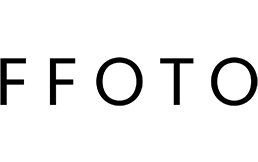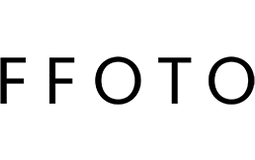In Conversation: Karilee Fuglem
Karilee Fuglem is an interdisciplinary artist working in photography, drawing, and installation. Fuglem produces beguiling photographs that study light and shadow -- artworks that incorporate invisible materials to explore transitional moments and liminal environments. FFOTO’s Cassie Spires talked to Fuglem about her practice and what’s up next for her in 2021.
Studio Light (2014-06-12, 7:02 pm), 2009
Cassie Spires: Can you recount a formative experience that put you on the path towards becoming an artist?
Karilee Fuglem: I can’t remember a time when I didn’t feel the charge that illuminates certain moments and demands communicating – that is, art. I was the kid in every school play, skipping off to ballet class, writing, and singing with equal enthusiasm. At 19, I thought I should get serious, ditched my planned English major and started working on a portfolio to get into a graphic design program, but my first life-drawing classes threw that plan sideways. I couldn’t believe that for three hours at a stretch, my job was to try to get across what I was seeing – and as it occurs to me now, what wasn’t visible. Those hours flew by. I found my path in the process of looking and trying to visually draw out that invisible something.
CS: How has your practice evolved over time?
KF: Observational work has been a thread running through my practice: from drawing, to writing, to installation, and to photography. I started out making wall-based installations. Gradually I shifted to working in large spaces with whatever materials I had at hand, wanting the artwork to be both approachable and experienced fluidly, without boundaries. For a few years, my favourite material was invisible thread, which I love because the most densely physical artwork can completely disappear into shadow, can fill a room and yet be invisible. Lately, my semi-visible material of choice is transparent or mirrored film, which when placed near a window or skylight reflects bands of light that can fill a room for a half hour or so until the sun’s angle has shifted, leaving maybe one small shimmery spot in the shadows. Relying on daylight attunes me to the things over which I have no control, and to the subtle changes in light playing over surfaces even in relative darkness.
Studio Light (2018-12-12, 11:09 am), 2018
CS: What practical concerns has your art faced lately?
KF: Two members of my household are attending class online, which has meant shrinking my already small studio to give them room to focus. I’ve also been managing my schedule so I can find solitude — late at night! — and not drill holes or maniacally saw things when someone has a class via Zoom (this is probably helping me grow as a person). And of course, it’s become challenging to imagine the kinds of site-based projects I’ve done in the past, at least those that require in-person viewing.
CS: What themes do you find yourself exploring in your current work?
KF: I’ve been thinking about how, with so much life spent online during the Coronavirus pandemic, our sense of where we are is suspended and unreal. It makes me consider how our boundaries are probably always blurrier than we think. For instance, during the lockdown some of us urbanites were waking up at our own rhythms for the first time in ages and subsequently remembering our dreams. This means all day long, part of you is aware that you were somewhere else before you woke up. So altered realities are not strange, it’s just that in normal, scheduled, productive circumstances, we don’t consciously access them. I’ve been thinking about this while cleaning my studio. I’m in the process of unearthing and returning to work I had begun last March — before everything went upside down — and finding clusters of thread and wire that are on the verge of being nothing; photographs of rooms nearly swallowed in darkness. It all makes sense now.
CS: What are you planning to work on for the months ahead?
KF: This past year, I’ve had access to a vacated apartment in my Montreal neighbourhood – a currently unliveable place, frozen in time between tenants. Having often worked for short periods in lovely, well-lit exhibition spaces, I was looking for an extended period of research in a dark, domestic place and this one has been all that – unheated, water cut off, air thick with old nicotine – not a place to hang about for fun, but exactly what I wanted. Working in natural light has attuned me to shadows, and here in this familiar setting, shadows are an entry into dream space, a threshold between the physical and imaginary.
For this reason, I prefer to visit at dusk, that most in-between time. I might stay in one spot, paying attention; or with the help of a guest, direct the sun’s last rays by mirror from a small window into the dark interior rooms. Often, with camera and tripod, I try to capture the imperceptible shift from daylight into gloom. Looking through the lens helps me to be present there, to live with my unease being in someone else’s place, which is how it feels, vacated or not.
Back in my studio, the photographs return those rooms to me anew: a swath of light across a cracked ceiling, a mountain landscape appearing incongruously through a doorway, sheer fabric draped over a cluster of someone’s possessions, subtly guarding their privacy. In the coming months I’ll revisit these photos, as well as a lot of writing and video taken during visits there alone or with others, trying to pull out what it is as an experience, a relationship with a space and its former inhabitants. It’s a task suited to this moment, focusing intently on a domestic environment, a place apart, but entrenched in the city, particular and also open to meaning. There’s a metaphor there, I’ll bet, for where I’m at now.
CS: Is there one work / series on FFOTO that you would like to tell collectors about?
KF: For several years I’ve engaged in an ongoing photo series I’ve come to call Studio Light. I work as much as possible in daylight in my studio, and sometimes while I’m trying to focus on a task I’ll notice something the sun is doing, like causing a piece of crumpled paper to glow as if from the inside or, just before sunset, projecting a complex pattern on the wall through a sheet of acetate. It might be a coiled strip of transparent material I had set aside while I worked on something else, which has suddenly disappeared except for a glowing pattern around it. Or a normally mobile artwork laid on tissue for packing has become a ribboned landscape.
I first took photographs of these instances as notes for installations I was developing, learning about transparent and translucent materials and how they respond to and reflect light. Somewhere along the way I started keeping my camera and tripod handy to capture these fleeting moments as well as I could, working quickly without rearranging things, letting the camera do its thing, to hold still the constantly changing day. Looking at the photographs, at first I can only see how they are not the moments I witnessed – too still, I think, doubting. But as time pulls me away from the initial events, these glowing images pull away on their own, greeting me like old friends with their strange, alien optimism. They contain the fact of being seen. And so, I continue.
Untitled, 2013
CS: As a student, I am always seeking to familiarize myself with the contemporary art scene. Are there artists on FFOTO that you yourself are a fan of? How do you feel they relate to your own practice?
KF: There are many artists in the FFOTO collection whose work I admire, but some with whom I especially feel an artistic kinship: Marie-Jeanne Musiol (read our MJM artist spotlight), Ed Pien, Chih-Chen Wang, Sylvie Readman, Yan Giguère, and Hua Jin. Hua Jin is an artist I was delighted to find here, whose work I only learned of last year. All these artists make magic from seemingly simple imagery. Musiol’s use of electromagnetic photography to capture the light-energy in plants really is a mystical process while the others I’ve mentioned are masters of homing in on a snippet of life and making it everything. We are opened up a little more to everyday wonder because of their work. And I cannot tell you if I see their work this way because of my own preoccupations, or vice versa. Probably, it's a little of each.
--
Karilee Fuglem's photographs are available via FFOTO courtesy of Pierre-François Ouellette art contemporain, Montreal.
Interviewer Cassandra Spires holds a BA in art history from Queen's University, and is currently an MA candidate in Ryerson's Photo Preservation and Collections Management program. Her current research interests include Canadian photography and decolonial practices in public institutions.





